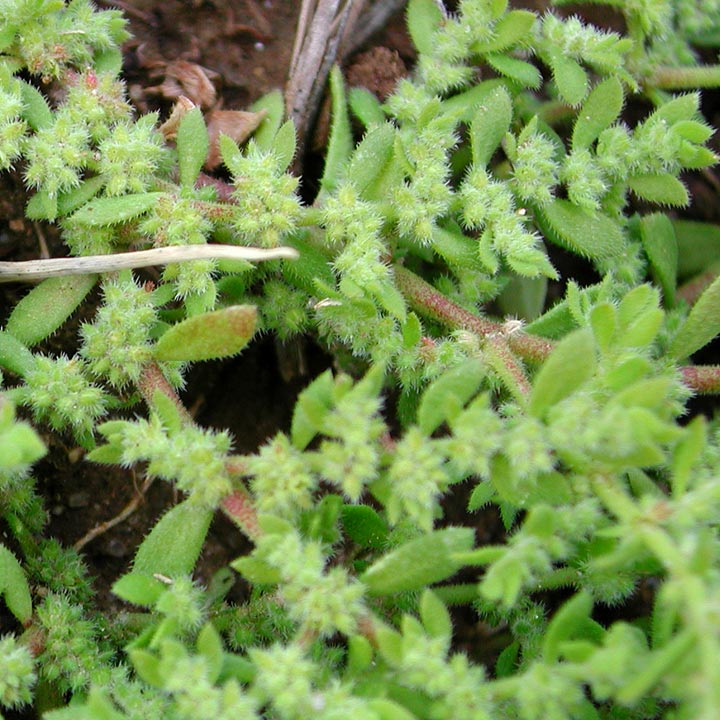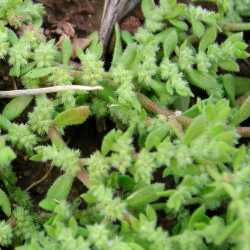Herbs, annual, biennial, or perennial. Taproots slender. Stems ascending or spreading to often prostrate, much-branched from base, mat-forming, terete. Leaves opposite, or distalmost alternate (from reduction of 1 member of a pair), connate by a line of tissue between adjacent stipules, sessile or virtually so; stipules 2 per node, inconspicuous, white, ovate to deltate, margins ciliate, apex acute; blade 1-veined, oblanceolate to elliptic or suborbiculate, not succulent, apex acute to rounded. Inflorescences densely clustered cymes usually on short lateral branches opposite a leaf; bracts paired, resembling stipules, smaller. Pedicels: flowers sessile. Flowers: hypanthium cup-shaped, not abruptly expanded distally; sepals 5, distinct, greenish to whitish green, lanceolate to oblong, 0.5-1.5 mm, herbaceous, margins green, herbaceous, apex acute to subobtuse, not hooded, not awned; nectaries near inner surface of filament bases; stamens (2-)4-5; filaments distinct; staminodes 5, arising from hypanthium rim, subulate-filiform, inconspicuous; styles 2, connate in proximal 3, filiform, 0.1-0.4 mm, glabrous proximally; stigmas 2, linear along adaxial surfaces of style branches, papillate (100×). Utricles at least partly enclosed by hypanthium, opening irregularly. Seeds dark brown or black, ovoid to lenticular, slightly laterally compressed, shiny, smooth, marginal wing absent, appendage absent; embryo peripheral, curved. x = 9.
Much like Paronychia, but the stipules between adjacent lf-bases united to form a fringed scale about as broad as long; bracts inconspicuous; stigmas 2, short, virtually sessile. 35, Old World.
Gleason, Henry A. & Cronquist, Arthur J. 1991. Manual of vascular plants of northeastern United States and adjacent Canada. lxxv + 910 pp.
©The New York Botanical Garden. All rights reserved. Used by permission.





